
Types of Commercial Kitchen Hoods
Shop All Commercial Exhaust Hoods
Use the following links to navigate this guide and learn more about the types of hoods:
Commercial hoods are divided into two types based on whether or not they are designed to handle grease.
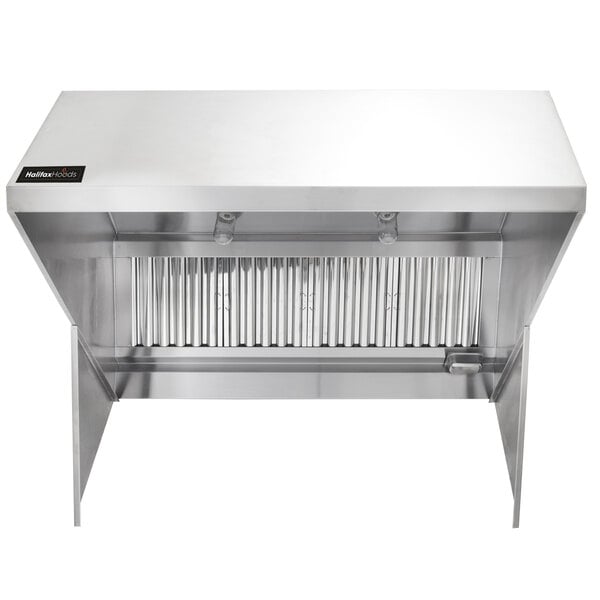
Type 1 Hoods
Type 1 hoods are for use over grease- and smoke-producing equipment, such as fryers, broilers, ranges, and tilt skillets.
- Include grease filters or baffles to trap and remove grease
- Custom-built to the operator's specifications to ensure every piece of equipment that will go under the hood is properly covered
- Must be regularly cleaned to prevent grease buildup, which could cause a fire hazard
- Requires professional installation

Type 2 Hoods
Type 2 hoods are for use over heat- and steam-producing equipment, such as dishwashers, steam tables, and some ovens.
- Not designed for use over grease-producing equipment
- Some models are designed to only remove condensation and steam while other models are strictly designed to remove heat and odors
- Requires professional installation
Type 1 hoods, or grease hoods, are designed to collect and remove grease and smoke and are used over restaurant equipment that produce grease-laden vapors, like ranges, fryers, ovens, and griddles. Type 2 hoods, or condensate hoods, are designed to collect and remove steam, vapor, heat, and odor wherever grease is not present. Type 2 hoods are typically used over dishwashers, steam tables, and pasta cookers.
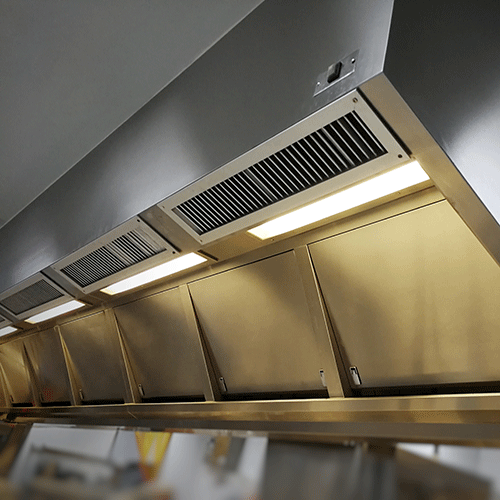
A make up air system provides additional air in your kitchen to replace the air that is being removed by the exhaust hood. Make up air is important in applications where the kitchen doesn't have enough fresh air coming in to replace the air exhausted by the hood, since your hood requires this replacement air to function properly.
Types of Make Up Air for Range Hoods
Below are the three styles of make up air that are used with a range hood:
- Short cycle make up air: Discharges the air supply into the hood instead of the room to avoid blowing air down onto staff as they cook.
- PSP (perforated supply plenum) make up air: Discharges the air supply through the front of the hood and directly onto staff. This is the least popular make up air style as it can cause discomfort for the cook staff.
- BRP (back return plenum) make up air: Discharges the air supply from a channel in the back of the hood and directs it under the cooking equipment and into the room.
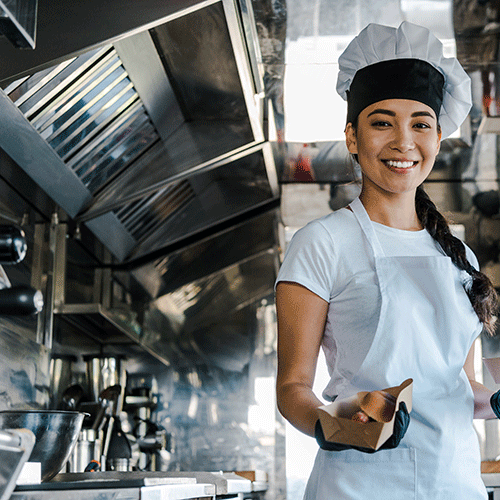
Every commercial kitchen, regardless of size or location, is required to safely vent heat, smoke, and grease-laden air from the kitchen to prevent hazardous fires and keep employees and staff safe and comfortable. Below are some restaurant hood systems you can find that are made for specific equipment and kitchens to ensure you meet code requirements.
Ventless Hood
Ventless hood systems feature self-contained filtration to keep your commercial kitchen up-to-code without the need for ducted hoods. They come in both type 1 and type 2 models and are for use with electrical equipment only.
Food Truck Hood
Food truck hood systems feature a compact footprint and a sloped-front hood canopy that is specifically designed for food truck and concession trailer installations.
Condensate Hood
Condensate hood systems are designed to remove the condensation and steam produced by dishwashers and steam equipment.
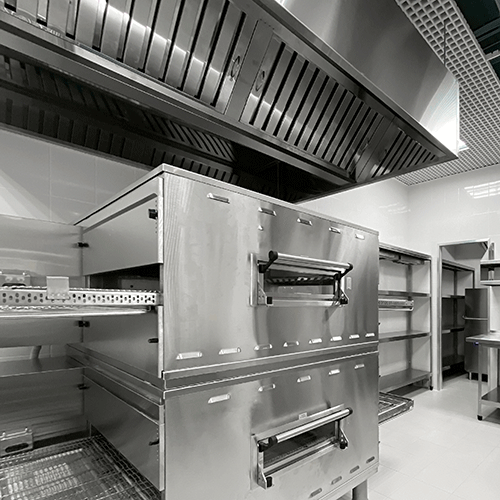
Outdoor Hood
Just like the name suggests, outdoor hood systems are designed for use with outdoor kitchens. These hoods feature a corrosion-resistant stainless steel construction that can withstand the outdoor elements.
Pizza Oven Hood
Due to the many different types of pizza ovens available on the market, it's important to determine whether you need a type 1 or type 2 pizza oven hood system. There are hoods made specifically for conveyor pizza ovens to accommodate for extra depth so that the ovens are fully covered.
Heat Removal Hood
Heat removal hood systems are a type 2 hood system that is designed to remove heat and odors from the kitchen. They are ideal for use with equipment that do not produce grease, such as ovens and small kitchen appliances.
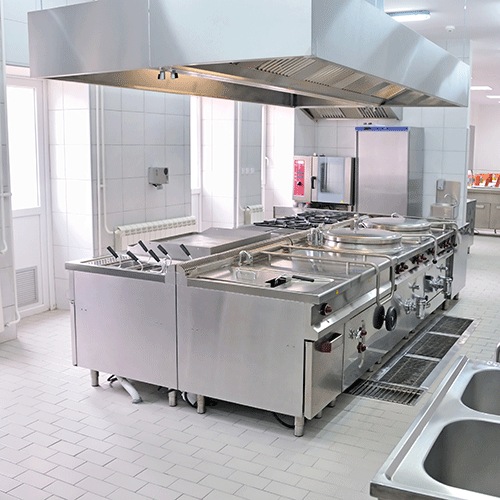
There are 6 basic hood styles that are found in commercial kitchens. Which hood style is right for you will depend on which equipment you will be placing under the hood and how you need to mount the hood.
- Wall-mounted canopy hoods are flush-mounted to the wall and are used for all equipment types that are located against a wall.
- Single island canopy hoods are ceiling-mounted over an island with a single cooking line and are used for all equipment types.
- Double island canopy hoods are ceiling-mounted over an island with a back-to-back cooking lines and are used for all equipment types.
- Backshelf / low level hood can be freestanding or flush-mounted to the wall and are used for counter-height equipment.
- Eyebrow hoods are direct-mounted to ovens and some dishwashers.
- Passover hoods are used over counter-height equipment in instances where a plate is passed from the cooking side to the serving side.
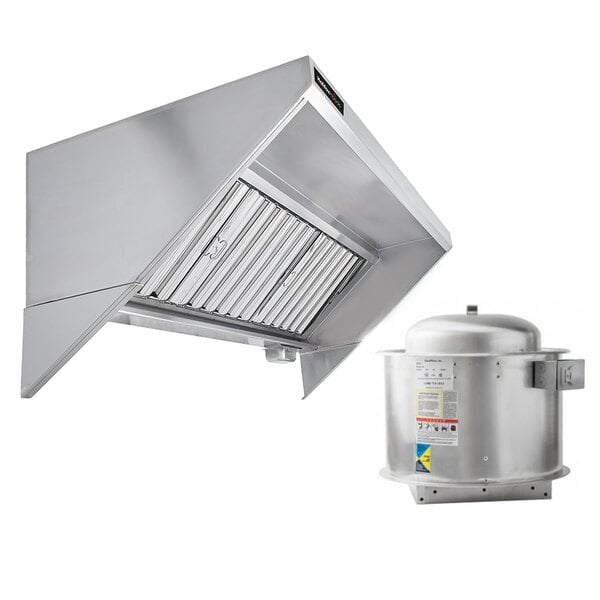
Fire suppression systems are frequently required to meet health codes for type 1 hoods, and need to be incorporated into the overall design of your kitchen to fit the specific layout of your cooking line.
- Serve as a critical safety feature to prevent kitchen fires in addition to proper hood design and regular cleaning and maintenance
- Can be integrated into the design of a hood or retrofitted into an existing hood
- Activated when they detect fire or excessively high heat
- Include spray heads that discharge wet fire suppression chemicals into the vent hood, grease filters, and over the equipment in the cook line to put out the fire and prevent a restart
- Most models can also be manually activated
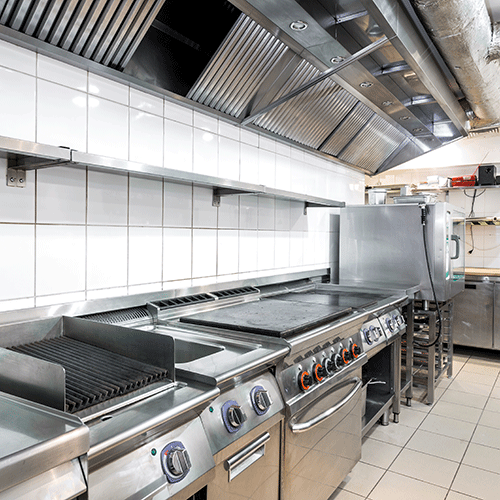
Place your low-duty equipment at the end of the cook line and position the heavy-duty equipment in the center of the cook line to optimize hood performance. The piece of equipment that is located at the end of the exhaust hood will have the greatest impact on the hood's overall effectiveness. By placing the heavy-duty equipment in the middle of the cook line, you're ensuring your hood is completely covering the equipment, which enhances its ability to trap and remove the cooking plume produced by the heavy-duty appliances.

Back to Top
Related Resources
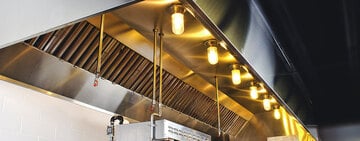
Range Hood Filter Types
A majority of commercial cooking equipment - such as ranges, griddles, and fryers - require the use of an exhaust hood. These kitchen hoods are designed to remove smoke, heat, steam, and fumes, as well as dirty kitchen air. However, the air in commercial kitchens is filled with bits of grease and food residues that can quickly clog up the ductwork in a hood system if not properly filtered out. By selecting the appropriate hood filter for your establishment, you can keep your exhaust hood working at peak performance and ensure clean kitchen air.

Equipment Installation Checklist
So, you've ordered a new piece of commercial kitchen equipment and it's now ready for delivery to the site. As an equipment buyer, have you done all of your homework to make sure that the installation will go as smoothly as possible, and that the equipment will work properly from the get-go? If you think you have everything in check, then take a look at the following list of "must do" tasks, to ensure that there are no surprises when it comes time to install your new equipment.
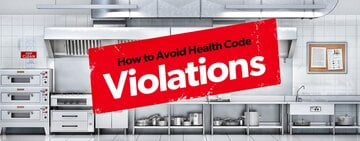
Common Health Code Violations and How To Avoid Them
Restaurant inspections from your local health department can occur at any time, without any advanced notice. Along with all the other daily stressors of operating a business, worrying about a possible health inspection can be overwhelming. We've made a health code violations list to remind you of some of the most common health violations in restaurants. Use our list as a general guide and make sure to research your local health department rules for the specific health codes for foodservice in your area. Click any of the restaurant health code violations below to learn more: Time and Temperature Control Improper Food Storage Improper Tool and Utensil Storage Poor Personal Hygiene Poor Kitchen Sanitation Cross-Contamination Chemical Use and S
- Topics 1346
- Industrial 55
- Troubleshooting Guides 21
- Restaurant Management 128
- Bar Management 55
- Catering Tips 35
- Bakery Management 42
- Food Trucks & Concessions 49
- Advertising & Marketing 37
- Eco-Friendly Tips 11
- Facility Layout & Design 41
- Coffee Shop Tips 28
- Installation & Maintenance 51
- Janitorial & Pest Control 30
- Safety & Sanitation 88
- Startup Tips 104
- Menu Design 10
- Kitchen & Cooking Tips 81
- Hospitality Management 23
- Pizza & Sandwich Shop Tips 36
- Smallwares 37
- Food Prep 88
- Tabletop Items 17
- Disposables 22
- Calculators & Tools 6
- Consumables 52
- Warewashing & Laundry 18
- Cooking Equipment 90
- Food Storage & Refrigeration 51
- Beverage Equipment 34
- Office Supplies 6
- Resource Type
- In-Depth Articles272
- Buying Guides296
- How-Tos93
- Product Reviews77


